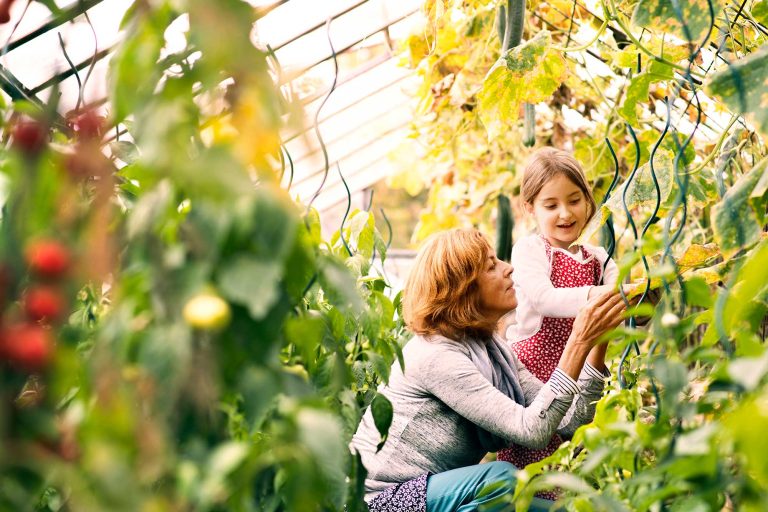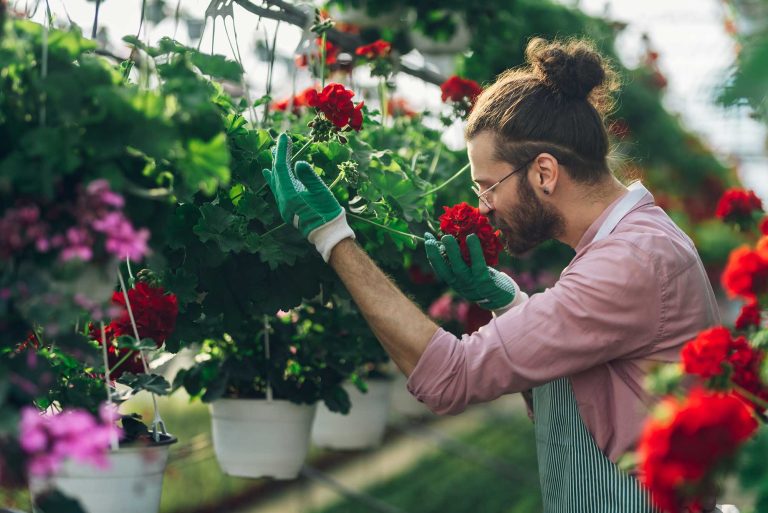Imagine stepping out your front door and being greeted by a beautiful, modern garden that instantly lifts your spirits. Your front garden is more than just an outdoor space; it’s a reflection of your style and a welcoming first impression for visitors.
Designing a modern front garden doesn’t have to be complicated or expensive. With the right approach, you can transform your outdoor area into a stunning, contemporary oasis that complements your home and enhances your curb appeal. In this guide, you’ll discover simple steps and creative ideas to help you design a front garden that truly stands out.
Get ready to unlock the potential of your space and turn your garden dreams into reality. Keep reading, and let’s start creating a garden that you’ll love coming home to every day.
Assessing Your Space
Evaluate the size and shape of your garden. Identify existing features like trees and pathways. Consider sunlight and shade areas to plan plant placement effectively.
Assessing Your Space Designing a modern front garden starts with understanding your space. Evaluate every detail to make informed choices. This step is crucial for a successful garden design.Measuring And Mapping
Begin by measuring your garden’s dimensions. Use a tape measure for accuracy. Record the length and width of the area. Create a simple map on paper. This helps visualize the layout. Consider the shape and size of the space. Think about paths, flower beds, and seating areas. Make notes on your map for reference.Identifying Existing Features
Take note of current features in your garden. Identify trees, shrubs, and pathways. Check for structures like fences or sheds. Assess the condition of these elements. Decide if they will stay or go. Consider sunlight patterns and shade areas. This influences plant choices. Pay attention to soil type and drainage. Understanding these factors guides your design decisions.Setting A Theme
Creating a modern front garden begins with selecting a cohesive theme. Choose plants and materials that complement your home’s architecture. Consider simplicity and functionality for a contemporary look.
Designing a modern front garden is not just about planting flowers; it’s about creating an inviting and cohesive space that reflects your personality. Setting a theme is crucial as it guides your choices, ensuring that every element in your garden complements one another. Think of it as the backbone of your garden’s design, providing direction and coherence.Choosing A Design Style
Start by asking yourself what kind of atmosphere you want to create. Do you prefer a minimalist look with clean lines and subtle elegance, or are you leaning towards a contemporary style with bold structures and innovative materials? Consider the architecture of your house. A sleek, modern home might call for a minimalist garden, while a more traditional facade might blend better with a classic or eclectic theme. Remember, your garden is an extension of your home. Make sure the style flows naturally from the exterior of your house to your garden.Color Palette Selection
Colors can transform your garden, affecting its mood and perception. Choose a color palette that complements your design style. For a modern look, you might opt for monochrome or a limited color scheme with pops of vibrant hues. Think about how colors will change throughout the seasons. Use evergreens for constant color and choose perennials that will bloom at different times to keep your garden vibrant year-round. Don’t be afraid to experiment with colors. A surprising splash of red or yellow might be just what your garden needs to make it truly unique. Engaging with your garden design can be an exciting journey. What better way to express creativity than through the living canvas right outside your door?Selecting Plants And Foliage
Designing a modern front garden involves thoughtful plant selection. The right plants and foliage create visual appeal and harmony. Consider the climate, sunlight, and soil conditions.
Choose plants that complement your home’s style and architecture. A well-chosen selection enhances both beauty and functionality.
Choosing Low-maintenance Options
Low-maintenance plants save time and effort. They are ideal for busy individuals. Opt for drought-tolerant varieties for dry climates.
Native plants adapt easily to local conditions. They often require less water and care. Hardy perennials also make excellent choices.
- Succulents: Minimal watering, great for sunny areas.
- Lavender: Fragrant, attracts pollinators, low-water needs.
- Grasses: Ornamental grasses add texture, require little maintenance.
Seasonal Planting Choices
Seasonal plants ensure year-round beauty. Select plants that bloom in different seasons.
Spring bulbs offer early color after winter. Summer annuals provide vibrant hues in warm months.
Fall perennials extend the garden’s appeal into cooler weather. Winter foliage like evergreens maintains structure in the garden.
| Season | Plants |
|---|---|
| Spring | Tulips, Daffodils |
| Summer | Petunias, Marigolds |
| Fall | Asters, Chrysanthemums |
| Winter | Holly, Boxwood |

Credit: food52.com
Incorporating Hardscaping
Incorporating hardscaping elements like stone paths and concrete planters enhances a modern front garden’s appeal. Use sleek materials to create clean lines and defined spaces. These features add structure and balance while complementing greenery beautifully.
Incorporating hardscaping into your modern front garden design adds structure and style. Hardscaping uses non-living elements like stone, wood, and concrete. It creates defined spaces and enhances the garden’s visual appeal. Hardscape features provide functionality and low maintenance. Let’s explore how pathways, walkways, retaining walls, and edging can elevate your garden design.Pathways And Walkways
Pathways guide guests through your garden with ease. Choose materials that complement your home’s exterior. Stone, gravel, or brick make durable, attractive paths. Curved pathways create a natural flow, inviting exploration. Consider lighting along the paths. It ensures safety and adds ambiance at night.Retaining Walls And Edging
Retaining walls shape your garden’s landscape. They prevent soil erosion on slopes. Use materials like stone or timber for a natural look. Retaining walls can double as seating areas. Edging defines garden borders and keeps mulch in place. Choose edging materials that suit your garden style. Metal, wood, or stone are popular choices. They add a polished finish to your garden beds.Lighting And Ambiance
Creating a modern front garden involves strategic lighting to enhance ambiance. Use soft lights along pathways and spotlights on plants. This highlights textures and colors, adding depth and charm.
Lighting plays a vital role in transforming your front garden. It sets the mood and highlights key features. The right lighting can make your garden inviting and safe. By using modern lighting options, you can create a stunning ambiance.Solar And Led Options
Solar lights are energy-efficient and easy to install. They harness sunlight, reducing electricity costs. LED lights offer durability and brightness. They last longer and come in various styles. Both options provide versatile solutions for garden lighting.Accent Lighting Techniques
Accent lighting highlights specific areas or features. Use spotlights to draw attention to plants or sculptures. Path lights guide visitors safely along walkways. Uplights placed at the base of trees create dramatic effects. These techniques enhance the garden’s visual appeal.Adding Water Features
Incorporating water features can elevate a modern front garden. Small fountains or ponds add tranquility and style. These elements can enhance the garden’s aesthetic and create a peaceful atmosphere.
Adding a water feature to your modern front garden can transform it from ordinary to extraordinary. The gentle sound of flowing water can create a peaceful and inviting atmosphere. It also acts as a focal point, drawing the eye and enhancing the overall aesthetic of your outdoor space. But how do you choose the right water feature and where should you place it for maximum effect?Choosing The Right Feature
Begin by considering the size of your garden. A small space might benefit from a compact fountain or a simple birdbath. Larger gardens can accommodate more elaborate features like a pond or waterfall. Think about the style that complements your home. Modern designs often feature sleek lines and minimalistic elements. A contemporary stainless steel fountain or a glass water wall might be perfect. Don’t forget to factor in your budget. Water features can range from affordable to extravagant, so it’s important to set a budget before you start shopping.Placement And Maintenance Tips
Placement is crucial for maximizing impact. Consider where you spend the most time in your garden, like near a seating area or a path. This ensures you can enjoy the feature both visually and audibly. Make sure the feature is easily accessible for maintenance. Regular cleaning is necessary to prevent algae build-up and ensure the pump functions properly. Use a simple checklist to maintain your water feature:- Regularly check the water level.
- Clean debris from the water surface.
- Inspect and clean the pump monthly.
Incorporating Art And Decor
Integrate art pieces like sculptures or decorative stones to enhance a modern front garden. Carefully chosen decor elements can add sophistication and personality to the space. Consider minimalistic designs that complement the greenery and existing landscape.
Incorporating art and decor into your modern front garden is a fantastic way to showcase your personality and style. It adds layers of interest and can make your garden feel more curated and intentional. Thoughtfully chosen pieces can transform an ordinary outdoor space into a captivating landscape that draws admiration and starts conversations.Selecting Sculptures And Ornaments
Choosing sculptures and ornaments for your garden can be an exciting process. Consider the style and theme of your home when selecting pieces. A minimalist sculpture might complement a sleek, modern house, while whimsical garden gnomes could suit a cozy, cottage-style home. Material is another crucial factor. Durable materials like stone, metal, or weather-resistant resin ensure your sculptures withstand the elements. Imagine a rusted metal sculpture that develops character over time, adding a rustic charm that evolves with your garden. Scale and proportion are vital. A large sculpture may overwhelm a small garden, while tiny ornaments could get lost in a vast space. Place larger items where they can be appreciated from a distance, and use smaller details to add intrigue up close.Creating A Focal Point
A focal point serves as the centerpiece of your garden, drawing the eye and anchoring the space. It could be a bold sculpture, a water feature, or even a beautifully crafted bench. The key is to choose something that resonates with you and complements the overall design. Think about visibility from different angles. Position your focal point so it’s visible from the front door or a prominent window, enhancing the view both indoors and out. Remember, a well-placed piece can change the entire dynamic of your garden. Surround your focal point with complementary plants or decorative elements. This helps integrate it into the landscape, ensuring it feels like a natural part of the garden rather than an afterthought. What will be the centerpiece that captures your imagination every day?
Credit: www.youtube.com
Ensuring Sustainability
Designing a modern front garden with sustainability in mind promotes eco-friendly practices. Use native plants to conserve water and attract local wildlife. Incorporate permeable materials for pathways to reduce runoff and enhance soil health.
Designing a modern front garden isn’t just about aesthetics. Ensuring sustainability is crucial for creating a garden that thrives with minimal environmental impact. By focusing on sustainable practices, you not only contribute to environmental conservation but also create a space that can withstand changing climates and resource availability. Imagine a garden that looks beautiful and nurtures the planet—sounds rewarding, right? Let’s dive into some practical strategies to achieve this.Water Conservation Strategies
Consider how much water your garden actually needs. Implementing water conservation strategies can significantly reduce water usage without compromising plant health. – Drip Irrigation Systems: These systems deliver water directly to plant roots, reducing evaporation and ensuring efficient use. – Rain Barrels: Collect rainwater for later use. It’s a natural and cost-effective way to water your garden. – Drought-Resistant Plants: Choose plants that require less water and are well-suited to your climate. Have you ever watched rainwater go to waste? Capturing it for your garden can make a huge difference.Eco-friendly Materials
The materials you choose in your garden can impact the environment. Opt for materials that are sustainable and have a lower carbon footprint. – Recycled Materials: Use recycled wood or stone for pathways and borders. It adds character and is environmentally friendly. – Natural Mulch: Organic mulch not only looks great but also enriches the soil as it breaks down. – Permeable Paving: This allows water to seep through, reducing runoff and promoting groundwater replenishment. Imagine walking on paths that not only look great but also support the earth beneath. Isn’t it satisfying to know that your choices can contribute positively to the environment? By making mindful decisions, you ensure that your front garden is a beacon of sustainability.Maintenance And Upkeep
Modern front garden design requires regular maintenance to keep its appeal. Choose plants that thrive in your climate for less upkeep. Incorporate materials like gravel and pavers for easy cleaning and longevity.
Maintaining a modern front garden is not just about preserving its aesthetic appeal; it’s about ensuring a healthy environment where plants thrive. The right maintenance and upkeep can save you time and energy, while keeping your garden vibrant all year round. Consider the joy of stepping into a front garden that welcomes you with lush greenery and colorful blooms. But achieving this requires some attention to detail. Are you ready to discover what it takes to keep your garden at its best? Let’s dive into practical tips for maintaining your green paradise.Seasonal Care Schedule
Creating a seasonal care schedule helps you keep track of essential tasks throughout the year. Each season demands different attention to ensure your garden remains healthy. – Spring: Focus on cleaning up debris and pruning plants. Add fresh mulch to support new growth. – Summer: Water regularly and control pests. Keep an eye on weed growth and remove them promptly. – Fall: Rake leaves and prepare plants for winter. Plant bulbs for spring blooms. – Winter: Protect sensitive plants from frost. Clear snow if it accumulates on branches. A well-organized schedule not only simplifies your work but also ensures your garden looks its best all year.Tools And Equipment Checklist
Having the right tools makes garden maintenance efficient and enjoyable. Here’s a checklist of essential equipment for your modern front garden: – Gloves: Protect your hands while handling plants and soil. – Pruning Shears: Perfect for trimming and shaping plants. – Garden Fork: Useful for turning soil and aerating beds. – Watering Can or Hose: Ensure your plants get the hydration they need. – Wheelbarrow: Convenient for transporting soil, plants, and garden debris. Investing in quality tools not only saves time but also enhances your gardening experience. Think about the satisfaction of effortlessly maintaining your garden with just the right equipment.
Credit: www.thecoolist.com
Frequently Asked Questions
What Are Modern Front Garden Design Elements?
Modern front gardens often feature clean lines, minimalistic layouts, and sustainable materials. Incorporate native plants and sleek hardscapes like concrete or gravel. Emphasize symmetry and balance for a cohesive look. Consider adding lighting and water features for a sophisticated touch.
How To Choose Plants For A Modern Garden?
Select plants with varying textures and forms for visual interest. Opt for low-maintenance, drought-tolerant species. Use a limited color palette to maintain a sleek look. Native plants are ideal as they require less upkeep and support local ecosystems.
Can Lighting Enhance A Modern Front Garden?
Yes, lighting can dramatically enhance a modern garden’s ambiance. Use LED lights for energy efficiency. Highlight pathways, architectural features, and plant groupings. Well-placed lighting creates depth, accentuates design elements, and provides safety.
How To Create Privacy In A Modern Garden?
Incorporate tall grasses, hedges, or decorative screens for privacy. Use vertical gardens to add greenery without sacrificing space. Consider modern fencing or lattice panels. Choose materials that complement your garden’s aesthetic for a seamless look.
Conclusion
Designing a modern front garden can transform your home’s appearance. It’s about blending style and function. Start with clean lines and simple plants. Choose materials that complement your house. Consider lighting for evening charm. Use gravel or stone for easy paths.
Plants should be low maintenance and stylish. A small water feature adds interest. Make sure your garden is inviting and practical. This design approach creates a welcoming entrance. It boosts curb appeal and showcases your style. Enjoy your garden’s beauty every day.
Keep it simple. Keep it modern.







